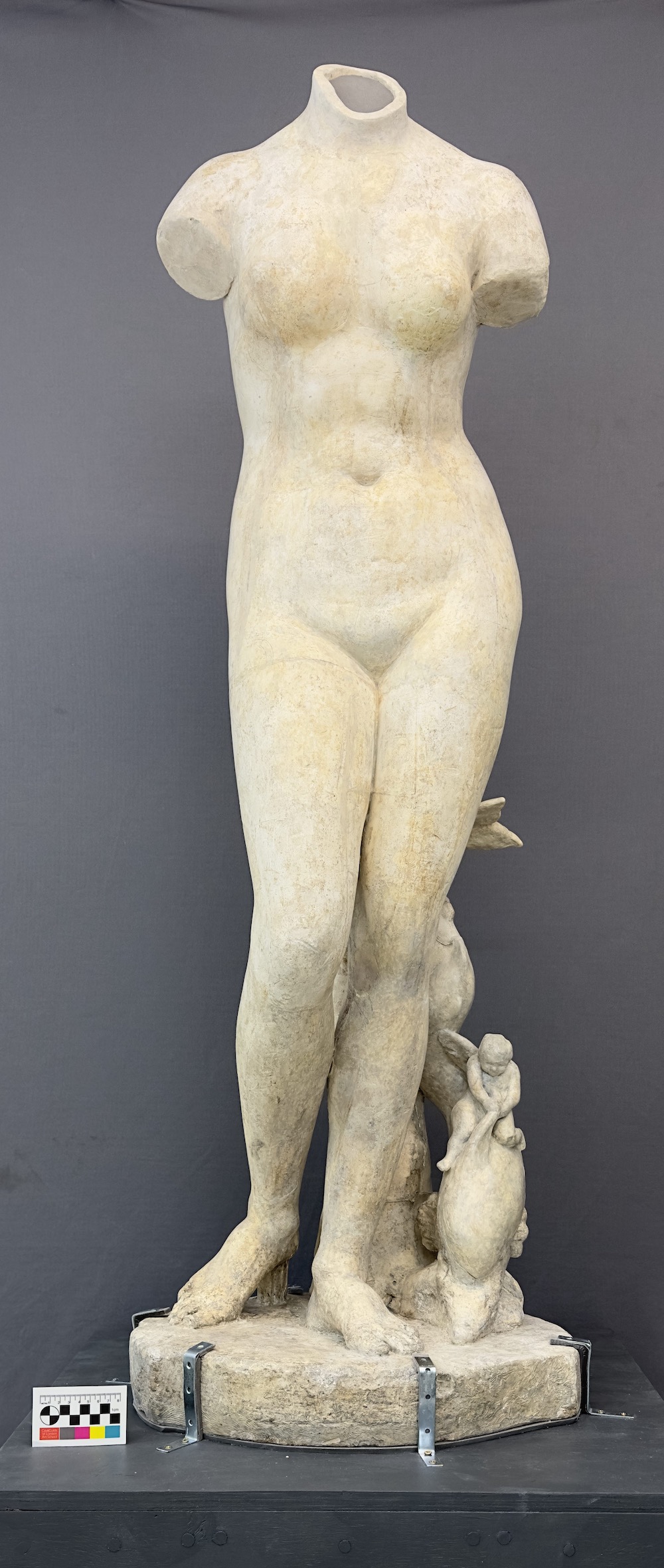Medici Venus Plaster Cast
Category: Stone


Introduction
The plaster cast has been at the City & Guilds of London Art School for over 100 years, used by students for modelling and drawing lessons. The original is housed at the Uffizi Gallery in Florence, Italy, and dates back to the 2nd century B.C.
Condition Before Treatment
The object was structurally unstable, with cracks at the knees and ankles. Grey lead paint covered large areas of the surface. Previous repairs showed poorly executed acrylic painting. There were losses across the surface, a semi-detached fin, and the end of the dolphin’s tail was missing. The figure stood on an unsafe base.
Treatment
Cleaning involved several steps. Xanthan gum gel mixed with 5% benzyl alcohol was applied to soften the lead paint, which was then removed using cotton swabs. Laser cleaning was carried out to lighten darker stains hidden beneath the lead paint. Acetone-soaked cotton swabs were used to remove acrylic paint and other accretions.
For repairs, Paraloid B72 at 10% and 20% concentrations in acetone, bulked with glass bubbles, was used to fill both deep and superficial cracks. Modostuc filler was applied to larger but shallow losses, including the semi-detached fin.
Retouching was done using a combination of acrylics and Gamblin colours. The dolphin, being the largest repainted area, was coated with Paraloid B72 at 5% in acetone to saturate the matte paint. The rest of the Venus was coated with Renaissance wax as a protective layer.
The missing end of the tail was modelled in clay, followed by mould making. Silicone rubber was used to create the mould, which was supported with plaster jackets. The tail was attached using a carbon fibre rod, and Paraloid B72 at 40% in acetone, bulked with glass bubbles, was used to adhere it to the trunk and back leg.
A new, higher wheeled base was designed and constructed. It consisted of a timber armature measuring 3×2 inches, covered with 18 mm plywood. Four 100 mm medium-duty swivel castors with fixed and braked white nylon wheels were installed to provide mobility.





